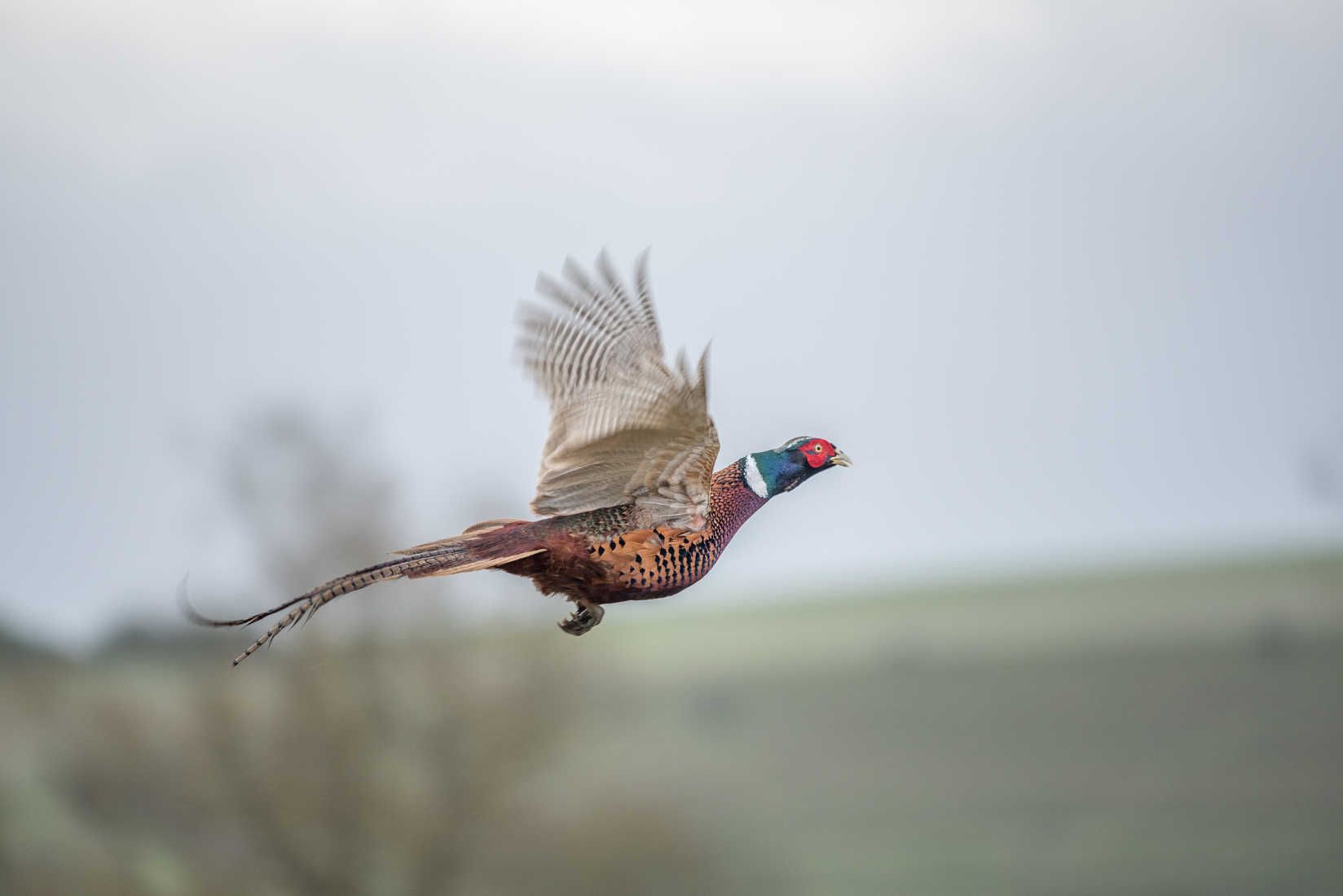By: Randy Tucker
The prospects weren’t exactly ideal for an afternoon pheasant hunt in western Pennsylvania. After a week of mixed rain and sleet, the ground was slick, and the skies were overcast, but we had a date with the Four Seasons Game Bird Farm in Butler County.
It was a Christmas present from my daughter Staci and son-in-law Adam. It’s a present you don’t exactly open, but when we had our second Christmas on Dec. 26 at their home, I had an idea of what was coming when I opened a gift that contained my own camouflaged hunting boots.
We hunt pheasants a few times each autumn and early winter in Fremont County, Wyoming, but the terrain on the public hunting areas near Ocean and Bass lakes is far different from the tall grass, heavy woods, and corn stubble of Pennsylvania.
We set out on a Monday morning, with Adam driving and his dad Dave Orbell reclining his 6-foot-6 frame across the back seat of the Chevy twin cab 4-by-4.
It takes about an hour to drive from North Huntingdon to Butler County, and the view out the window differed sharply from the austere, often stark images of the Cowboy State.
Farms slowly replaced suburbs, but we really wouldn’t call any of it rural in the sense of miles and miles between farms — as often is the case throughout Wyoming.
This was a hunt we’d been on before, also as a Christmas present, back in 2013.
As we pulled into John L. Kennedy’s bird farm, his mixed shorthorn/Angus herd grazed in a field across a small stream from his hunting lodge.
We hoped for the guide we’d had two years before and were lucky enough to get a second hunt with Roy Yockey. Roy and I are the same age; he recently retired when he was 59, but remains a hunting dog fanatic.
He had six portable kennels in the back of his truck. Cold wet noses poked out of holes in all six as we set out for the hunting area.
Roy let a pair of German shorthairs, Nuke and Misty, out of two of the top boxes, and Liz, a small, 6-year-old black Labrador retriever out of one of the lower boxes.
We hunted with Nuke back in 2013 when he was just an overactive-year-old puppy. The intervening two years represented a miraculous change in the 40-pound dog. His partner back then was a 4-year-old female, and the pair worked in tandem with the precision and grace of a ballet team.
The dogs raced ahead of us quickly, burning off pent-up energy accelerated by remaining in the kennel as the other three dogs hunted in the morning.
Misty worked diligently through the shoulder-high grass, and Nuke flew ahead, behind, and alongside her as they sniffed to pick up the trail of pheasants in the 300 or so acres we hunted.
Roy was an accomplished hunter and storyteller, just the type of guide you hope you can find in an area you’re unfamiliar with.
I was using a borrowed shotgun, Adam’s over-and-under 12 gauge, but it had heft and balance similar to my own 16-gauge and swung easily on target.
Roy is about 6-5 and covers ground with an easy gait that belies his age. The dogs were all equipped with GPS collars that allowed Roy to determine not only where they were but if they were moving or stationary. When this trio stopped moving, it was for only two reasons — either nature was calling, or they were locked on a bird.
It was a strange mixture of 21st-century technology with old-fashioned bird hunting in the wet fields of the Keystone State.
We started just after noon in a wet drizzle that quickly built to a steady rain. The forecast called for more of the same, but about 45 minutes into the hunt, the rain stopped, a light breeze came in from the southwest, and it turned into a perfect winter afternoon in the shadow of Lake Erie.
Nuke and Misty began to trail and lock on birds. They don’t flush, but Liz, the black Lab, does. With a small bell tied to her neck, she makes a lot of noise. Roy gave her a command to flush each time her two partners found a bird.
As is the case with people, some of the birds were cagey survivors, while others just jumped directly in shooting range. One hen evaded us three times, and we didn’t follow her after that. Her first flush was right in front of Dave, and I didn’t shoot because he was in the way. The second time the little bird broke directly between Adam and me, and we still didn’t have a shot. The third time Liz flushed her, she clung low to the ground with Nuke directly in the way. She was a smart hen, if she finds a good nesting area, we can hope her offspring have the same intelligent, avoidance traits — it makes a much better hunt.
We limited out in a few hours and followed Roy and his trio of dogs back to the truck.
It was a memorable day on a crisp afternoon that those who don’t appreciate the atavistic thrill of hunting choose not to understand.
Randy Tucker is a retired history teacher and freelance writer from western Wyoming. He has a lifetime of experience in farming, ranching, hunting and fishing in the shadow of the Wind River Mountains. Contact him at [email protected].

